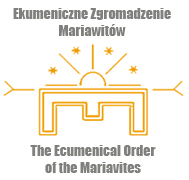May is the month dedicated to the Blessed Virgin Theotokos, the Mother of God. It seemed to us a good opportunity to write something about the prayer Hail Mary.
The Hail Mary (also called the “Angelical salutation”, or, sometimes, the “Ave Maria”) is the most familiar of all the prayers used by the Church in honour of the Theotokos. It was probable that the words of the Angel Gabriel´s salutation, χαῖρε κεχαριτωμένη (Luke, 1:28), would be adopted by Christians as soon as personal Marian devotion manifested itself in the history of the Church. The word χαῖρε which literally means ‘rejoice’ or ‘be glad’, was a normal greeting in the Greek language. The word κεχαριτωμένη, which is usually translated as ´full of grace´, can be also translated in other ways. It comes from the verb χαριτόω which means ‘to show, or bestow with, grace’.
These, or similar words can be found in a Syriac ritual attributed to Severus, Patriarch of Antioch (c. 513), or in the Greek rituals of St. Andrew of Crete and St. John Damascene, or in the “Liber Antiphonarious” of St. Gregory the Great as the offertory of the Mass for the fourth Sunday of Advent. However, the Catholic Encyclopedia admits that these examples do not warrant the conclusion that the Hail Mary was used as an “accepted devotional formula before about 1050.” The Mary-legends which began to be formed in the early years of the twelfth century show us that the Angel´s salutation was becoming a widely used form of private devotion, though it is not quite certain how far it was customary to include the clause “and blessed is the fruit of thy womb,” which is borrowed from the greeting of St. Elizabeth (Luke, 1:42). Yet Abbot Baldwin, a Cistercian monk who was made Archbishop of Canterbury in 1184, wrote a sort of paraphrase of the Hail Mary in which he says:
To this salutation of the Angel, by which we daily greet the most Blessed Virgin, with such devotion as we may, we are accustomed to add the words, “and blessed is the fruit of thy womb,” by which clause Elizabeth at a later time, on hearing the Virgin’s salutation to her, caught up and completed, as it were, the Angel’s words, saying: “Blessed are thou amongst women and blessed is the fruit of thy womb.”
Thomas Aquinas (c. 1225–1274) indicated that the prayer was in use in his time, with only the word “Mary” being added to the greeting of the angel Gabriel. Slightly later, the name “Jesus” seems to have been added to specify who was meant by the phrase “the fruit of thy womb.” The Dutch Jesuit Petrus Canisius is credited with adding the sentence: “Holy Mary, Mother of God, pray for us sinners,” which appeared for the first time in his catechism of 1555. Eleven years later, the sentence was included in the Catechism of the Council of Trent of 1566. But we meet the prayer as we know it now, already in the breviary of the Camaldolese monks, and in that of the Mercedarians c. 1514. There is also a version of Ave Maria identical with our contemporary one, except for the omission of the single word nostrae , printed at the head of the little work of Savonarola’s issued in 1495. Even earlier than this, in a French edition of the “Calendar of Shepherds” which appeared in 1493, a third part is added to the Hail Mary, which is repeated in Pynson’s English translation a few years later in the form: “Holy Mary moder of God praye for us synners. Amen.”
There are various versions of the prayer. Some of them you can find here .
The Hail Mary is the essential element of the Rosary, a prayer method in use especially among the Latin Rite (Western) Catholics. This tradition appears in the East only among Latinized Ruthenian/Ukrainian and Maronite Catholics (we know it as regular participants in the Byzantine Catholic services in Slovakia). It is also the central part of the Angelus, a devotion generally recited thrice daily by many Catholics, as well as some Anglicans and Lutherans. Martin Luther himself believed that Mary should be held in highest reverence. Although he did not agree with Mary’s veneration, he did advocate the use of the first half of the Hail Mary (that is, “Hail Mary, full of grace, the Lord is with thee. Blessed art thou amongst women and blessed is the fruit of thy womb, Jesus.”) as a sign of reverence for and devotion to the Virgin. Anglicans also employ the Hail Mary in devotional practice. Traditional Anglo-Catholics use the prayer in much the same way as the Roman Catholics, including use of the Rosary and the recitation of the Angelus. Anglican theologian and Bishop of Birmingham, Hugh Montefiore (1920-2005) ,said “Christians rightly honour and venerate her as one of the great saints of God. God had signally honoured her by choosing her to be the mother of Jesus.” Rowan Williams made history as the first Anglican Archbishop of Canterbury to pray and preach at Lourdes. In his sermon he said:
Our prayer here must be that, renewed and surprised in this holy place, we may be given the overshadowing strength of the Spirit to carry Jesus wherever we go, in the hope that joy will leap from heart to heart in all our human encounters; and that we may also be given courage to look and listen for that joy in our own depths when the clarity of the good news seems far away and the sky is cloudy. But here today, with Elizabeth and Bernardette, we say, in thankful amazement, ‘Why am I so favoured, that the mother of my Lord should come to me?’ And we recognise that our heart’s desire is met and the very depth of our being stirred into new life.
(you can listen to the sermon here )




